
Ready to create your marketing strategy for 2023?
This is a fantastic opportunity to think about where you want your business to develop in the next year and to reflect on the marketing strategies that have been the most effective for you so far this year.
What are the factors that would genuinely make a difference for your company?
A company's approach to reaching out to new consumers is known as its marketing strategy. Typical marketing strategies include the target audience, the products or services they are most interested in buying, the factors that influence their purchasing decisions, and the value proposition and key messaging that will best reach them.
Defining Terms of a Marketing Strategy
What is a marketing strategy?
Essentially, a marketing strategy is just a technique to integrate and evaluate your sales activities' data into one workable plan that everyone can understand. Therefore, a marketing strategy is a process that enables a company to concentrate on the resources that are already accessible and use those resources in the most effective way possible to increase sales and gain an advantage over other businesses in the industry.
Before developing a marketing strategy, it is essential to identify the company's objectives. These are the long-term goals that the organization has set for itself, i.e., where it hopes to be in, say, five years' time. Every advertising strategy, of course, will have its own corporate objectives.
The marketing mix is another aspect of the strategy, and it consists of the four P's:
- Product
- Price
- Place
- Promotion
After compiling this data, you can develop your marketing strategy by outlining the steps you will take to meet your immediate marketing goals (such as increasing sales and expanding your client base) and your long-term company goals (ousting competitors, expansion, etc.)
Why Should You Develop a Marketing Strategy?
To begin, marketing strategy contributes to the development of a more harmonious relationship between organizations. As a result of everyone being on the same page, organizational efficiency increases. To ensure the most effective marketing message, the product team collaborates with the advertising department. Creating marketing strategies has a number of other advantages, which are as follows:
1. Efficient Distribution Processes
When you have a solid marketing strategy in place, you can determine things like your ideal clientele as well as the range of prices at which you may sell your products. By doing so, you may pick the best channel for distribution.
For instance, if your target market consists of Millennials and Gen Zers, you'll need to enable payments via mobile devices and tablet computers via methods like PayPal and credit cards. It's true that making purchases simple for your consumers may increase your revenue and keep them as repeat buyers.
2. Create a Company Persona
There is no way for any company to succeed in the long run without establishing a positive reputation for its brand, and this is another area where a marketing strategy may be useful. Spending money on media and advertisements that do not fit in with the desired representation of your business is a waste of marketing resources. As your company's reputation grows, you'll realize that spreading your advertisements over every available website and airtime on the radio is a bad idea.
3. Making Money-Making Products
When it comes to marketing, you're not only limited to advertising the things you already have available. Understanding your customers on a deep level and catering to their wants and requirements is the essence of marketing. And if you believe your current items are not meeting customer expectations, you will need to rethink your product line.
Providing excellent service in this manner can increase customer loyalty and help you achieve lasting success. To keep up with the fast-paced evolution of the marketplace and the technological landscape, innovative marketing strategies are necessary.
To put it simply, you need a marketing strategy if you want to offer the right items to the right customers through the appropriate channels. The PEST (Political, Economic, Social, and Technological) and SWOT (Strengths, Weaknesses, Opportunities, and Threats) analyses, as well as other forms of market research and data analysis, fall under this category.
The Perfect Marketing Strategy for 2023: 10 Steps
To assist you to construct a great action plan, we have compiled a list of ten helpful action items to pay attention to when performing your research to make sure you've covered all your bases when developing your marketing strategy
1. Understand Your Company
Many companies, eager to get started on their marketing strategy, skip the necessary groundwork and instead get right into the nitty-gritty details. It's true that you can't plan for the future without first understanding the present and the past.
Take a look back at your marketing strategies and evaluate their successes and failures. I constantly stress to my customers that the tried-and-true methods they have always used may not be optimal for 2023 and that there may be unrealized potential in approaches they have never considered.
2. Implement a SWOT Analysis
To begin, you should do a SWOT analysis of your company in order to determine its strengths, weaknesses, opportunities, and threats.
It's a great way to bond as a team, and it's also crucial to the rest of the planning process since it will influence how you go about doing everything else. In order to reduce the possibility of bias and ensure that all relevant angles are covered, it is important to get the input of as many peers as possible.
Knowing your strengths and weaknesses, as well as being able to identify external variables that serve as the motivation for your business's existence or, alternatively, pose a threat to it, will provide you with the information you need to develop a strategic marketing plan.
3. Setting Goals
It is time to start making some goals now that you have more information. You may want to target a new demographic, boost sales in a certain region (or globally), or expand your company's reach.
After that, reallocate your marketing funds so that they better serve your new objectives. Choose the strategies and promotional mediums that will help you achieve your objectives.
Have you spent the year 2022 debating whether or not to join TikTok? Think carefully about your intended outcomes. Definitely use TikTok if you want to reach a new, younger demographic with your brand for 2023. You may also wonder, "Are my current customers or possible new consumers making use of this platform?" Think carefully when deciding on a strategy.
For example, we previously conducted market research for a business and learned that 30% of their potential buyers had hesitated to buy due to a lack of product knowledge. That's why we refocused our content approach to incorporate more in-depth articles, user-friendly videos, and engaging website stories that make discovering and understanding the product a joy.
We also analyzed Facebook's audience data to identify our clients' most pressing concerns. Our social media content strategy was developed with these preferences in mind. If your material is tailored to your target audience's needs, you'll see an uptick in engagement and a surge in new conversions.
Raising brand awareness and attracting qualified prospects are more examples of marketing goals. Your goals may also include expanding your market share, retaining your position as an industry leader, and providing more value to your customers.
If you want your marketing department to succeed in the coming year of 2023, you need to lay out a plan that includes specific goals.
4. Prepare a Marketing Plan
Oh my, I need to create a plan for my strategy. What exactly is the difference?
Your marketing plan will give an outline of the reasons why your marketing team would need certain resources, perform specific activities, and establish particular targets during the course of the year. The marketing plan lays out the steps that will be taken to implement the marketing strategy.
If you utilize the correct marketing plan template, you'll be able to create a document that describes your spending goals for the year, the tasks your marketing team must do, and the channels they'll use to spread the word.
It will also help you stay focused on the big picture by constantly referring you back to the business overview.
5. Create Buyer Personas to Better Understand Your Target Audience
You may use buyer personas to create fictitious, broad representations of your ideal clients. It's a great tool for businesses to learn more about their consumers and connect with them on a more personal level.
A variety of sources, including website statistics, social media channels, customer reviews, and in-person meetings with prospects and customers, all contribute to the development of buyer personas.
Researching and creating personas entails gathering information about your target audiences, such as their history, interests, and demographics, and then using that data to make decisions on how to best reach them across a variety of channels using a certain voice and tone.
6. Examine the Current Market and the Competition
We've found that a business's ability to thrive and stand out in the market depends on its marketing approach.
In order to reach that peak, though, you must have an in-depth understanding of your industry and your rivals' situations, including the challenges they face. How have they been so successful? Where do their cracks show up?
Knowledge, once again, is the key to success. There are many intelligent tools that can help you answer all of these questions and more about your competitors.
If you want to find market openings, unmet requirements, widespread complaints, and promising new trends and ideas, you must keep your eyes and ears open to what's occurring in your sector.
7. Use the Best Tools for the Job
Is your marketing technology suite (or "martech stack") up to par?
We are typically in favor of software as a service, often known as SaaS technologies because they provide short-term subscription models instead of long-term commitments, which can be detrimental to a company's profitability in the long run.
Technology should serve as an enabler for your plan rather than the other way around. Investing in shiny new services might be appealing, but in the end, if the plan does not require technology, it may rapidly become a resource that has been wasted. Over the course of your company's development, you will likely try out many various resources because there is no perfect solution. Tools like Zoom (obviously), Google Meet, GoogleAds, Hubspot, WordPress, Inflo.Ai, Google Analytics, TweetDeck, and Buffer are among our current favorites.
8. Examine All of Your Media
Consider what you currently have at your disposal that you may use to aid in the formulation of your strategy. If you divide your resources into paid, owned, and earned media, you can more easily manage your assets.
- Paid media: Any method of reaching your intended audience that costs money is considered paid media. Media, both online and off, such as social media, search engines, and websites, as well as traditional methods like television, direct mail, and billboards.
- Owned Media: It includes any visual or audio content (photos, films, podcasts, ebooks, infographics, etc.) that was produced in-house by your marketing department.
- Earned media: What we call "earned media" (or "user-generated content") is simply stuff that has been created by ordinary people. Earned media includes things like social media shares, tweets, and Instagram posts that include your brand name or logo.
Gather all of your resources in each media format and place them in one central spot so you can see what you got and how to best incorporate it into your overall plan.
For instance, if you currently have a blog that publishes weekly material related to your specialty (owned media), you might want to think about marketing your blog entries on Twitter (paid media) so that consumers would retweet them (earned media). That will allow you to develop a more complete and effective marketing strategy.
Throw away any assets that aren't helping you get closer to your objectives. This is a perfect opportunity to organize your resources and find any missing pieces.
9. Conduct Media Campaign Audits and Planning
Right now, you need to figure out what information will actually be useful.
Pay attention to your marketing and owned media objectives. For example, would keeping the calls to action (CTAs) at the bottom of your blog entries up to date help you improve the number of people who RSVP for your event?
Next, evaluate your target audience profiles. Suppose you're employed by a business that produces video editing software. Make a 15-second Instagram demo video demonstrating how wonderful your product is at solving one of your persona's difficulties, such as adding clean sound effects to their videos, if you don't already have any material that represents that.
Create a strategy for developing content. Each piece of content should have its own subject cluster, set of goals, structure, and distribution channel, all of which should be outlined in the strategy. Specify the problem it's fixing for your ideal customer.
10. Make It Happen
Market analysis and strategic planning should now have provided a clear picture of the roles that will play in putting your strategy into action.
The very last thing you need to do is put everything together and start assigning actions to your plans.
Construct a report outlining the processes you will need to carry out your campaign. Specify your course of action.
When producing this paper, keep the future in mind. The typical length of a long-term plan is 12 months. Your strategic marketing initiatives should orbit around this calendar.
Let's revisit the video editing software firm as an example.
Perhaps by the beginning of the new year, you will have released an update to the program that streamlines the export procedure for end customers. For example, in April, you may release an ebook explaining editing terminology to your buyer personas, then in September, you might introduce integration with another program.
Keep in mind that your company's digital strategy is one-of-a-kind; thus, the accompanying documentation should be tailored specifically to your firm. Your plan will be successful if it has the elements we've just discussed.
Now that we've covered all the bases for a successful marketing plan, it's time to look at some examples to spark some ideas.
Why Is a Marketing Strategy Necessary for Me?
A well-developed marketing strategy allows you to increase revenue in a methodical, quantifiable manner. It's a boon to business expansion, giving you a leg up on the competition (or at least a leg up on yourself).
Your marketing strategy should also assist you in defining your target clientele, their needs, and the unique value you bring to the table in order to sell a product. Developing a marketing plan for your firm might help you uncover previously unnoticed strengths.
The goal of your approach should be to attract and retain a devoted client base who will help you generate revenue over time. Though big dreams might help you make decisions about what products to create or how to market to your present clientele, the reality is that you need to be able to rely on data if you want to expand your business and increase your profits. That requires you to plan and execute a marketing strategy based on solid data. Although some improvisation may be required, keeping your marketing efforts well-organized will help you keep costs down.
The goal of every successful marketing strategy is to increase sales to consumers who are likely to either (a) recommend your goods or services to others or (b) buy from you again in the future.
How Can I Make the Most of My Marketing Plan To Maximize Its Effectiveness?
The topic of marketing strategy has been researched and written about extensively. However, there are just five essential components to every strategy:
- Finding new consumers.
- Getting the word out about your goods.
- Highlighting your unique selling propositions.
- Developing connections that strengthen client loyalty.
- Doing anything else that can push a potential customer into your "sales funnel".
Successful marketing campaigns are the result of meticulous advance preparation. Building a plan outlining how you want to promote your business will help you focus on the most crucial aspects of your endeavor and better allocate your resources.
Basically, there are just three things you need to do:
- Keeping a close eye on your revenue, expenditures, and operating costs
- Seeing the value of including others with relevant expertise,
- Keeping a level head about the volume, timing, and method of sales is essential.
How Much Are You Looking To Sell?
The answer to this question is very conditional on the kind and scope of your commercial enterprise.
For instance, many companies only sell a few types of goods. And if you're a lone proprietor or a business that relies on foot traffic, like a financial advisor or real estate agent, it may be more effective to promote the many advantages of working with your firm as a whole.
However, if you're a manufacturer or supplier, you're probably considering ways to boost your revenue. This may mean selling more units, selling units at higher prices, or producing units at lower costs. You probably know the answers to these basic questions by core:
Do you plan to expand your current product line in the future, or do you operate a company that produces the same thing over and over again and hopes to boost profits per sale?
Do you think you might attract a new demographic, or do you have evidence that your present clientele has the potential to buy more of your product?
Is your company dependent on a specific time of year, or does it fluctuate with the economy and environment? If that's the case, should you aim to increase sales everywhere or just in a single department?
How Much Revenue Would You Need To Make, and When?
Connecting your marketing strategy to your overall business goals and expenses is crucial when developing a plan that will get your marketing to pull its weight. The ups and downs of current sales may be seen in the operational budget, which can inform your advertising strategy.
Which Restrictions Do You Have?
There are three basic limitations that most small business owners face, but if you're dedicated to your firm and eager to succeed, you may easily overlook them. Capability, insight, and mobility are all required.
Do You Think You’re Qualified for This Role?
Hiring a professional is a wise investment whether you need help writing a brochure, inventing a clever new product name, or planning an advertisement for the local paper. It's possible that you're competent and even love the creative process, but it's also possible that marketing isn't your strong suit.
Do You Have the Knowledge Necessary To Define “Excellent Marketing”?
I can tell that your tastes are well-defined. Of course, you have some intuitive sense of what will or will not resonate with your target audience, but it doesn't always make you the best person to make marketing-related calls.
Trust your team to help you select the best channels and the most effective creative. If you provide them with accurate information about your target market and explain why your product should appeal to consumers, they will be able to provide you with sound advice on achieving your goals.
Is Marketing on Your To-do List?
When it comes to marketing, you don't have to be constantly throwing your weight around. However, even with a small staff, it's crucial to keep marketing in mind at all times.
Do you update the upper management with marketing data? Does management at your company include the marketing department in strategic planning and the creation of new products?
If you want your product marketing plan to be effective and long-lasting, two-way communication is a must.
What Assistance Do You Want for Efficient Marketing?
It is important to consult with your team before deciding on a marketing budget since their input is invaluable. In an ideal world, they would have been contributing to the process all along.
A presentation about future marketing strategies is more likely to act as a catalyst, bringing forth fresh ideas and perspectives. Gather input from many sources, such as casual conversations with loved ones or more formal meetings with senior team members. Put it to use in determining what sort of advertising strategy would be most beneficial for your company.
Establish a Team Working Internally
You could find that it's more cost- and time-efficient to keep everything in-house. Depends on the kind of marketing you intend to do and the amount of specialized knowledge you'll need to do it.
Although a few regular hours per week from a part-time employee may be sufficient for local, low-key initiatives, a nationwide marketing campaign requires significantly more engagement from experienced specialists.
Involve an Outside Team
Have faith in yourself. There is value in bringing in outside aid if you have recognized significant prospects but realize your operation won't support you or you lack the skills to produce the degree of marketing strategy you need.
Either hire a full-time or part-time marketing consultant to handle all of your company's marketing needs or hire a marketing agency to handle individual projects as they arise.
Collaborate Using Combined Skills
When developing targeted marketing campaigns, many small companies find it helpful to work with an external team while still maintaining a hands-on approach to product development, feedback, and the opinions of current consumers.
Consider Promoting Not Just Your Items but Also Your Business
When starting out, many companies make the mistake of trying to sell "the ultimate product" or "the best thing we manufacture" instead of working to establish their reputation as a trustworthy organization.
To put it more simply, this refers to marketing and advertising. It involves making the specifics of your business proposal available to the appropriate individuals at the appropriate time and in the appropriate manner. The following are some of the more time-tested methods of increasing brand recognition:
- Referrals and recommendations obtained through word of mouth
- Visitors to your website or storefront
- Having a presence at a conference, trade fair, or event
- Promotional items used at the point of purchase, such as pamphlets and product samples
- Promotion through means of direct mail or email blasts
- Social media
TIP:
Determine how you can best raise awareness, and then compare your results to others.
In order to evaluate the success of brand recognition efforts, it is important to collect data on consumer interactions and feedback on how they learned about your company. As you develop more in-depth strategies for promoting your items, this information might prove invaluable in measuring consumer sentiment.
When Developing a Marketing Strategy, What Details May I Ignore?
The devil is often found in the details when it comes to managing a small business. Especially if you become pumped up about the potential of marketing and your ideas are well-structured and carried out with precision.
Investment of time, energy, and resources into uncovering excessive detail is tempting, whether it be demographic data that might advise your team or marketing opportunities. It's up to you to decide how you'll advertise, where you'll market, and where your imagination will lead you.
When you’re building your initial round of marketing strategy, keep focused on the high-level results first. Take a hard stand on whose input is valued for major creative decisions. Make every effort to avoid making decisions through the use of committees. Decide who you're trying to market to the most, and then tailor your efforts to that group specifically. Expand your possibilities for sales afterward.
Marketing Strategy: Mistakes To Avoid
There is no universal marketing approach that can successfully promote a business. Constructing an effective marketing strategy is difficult, and even the most skilled of marketers may miss the target. It's easy to lose sight of little factors that might have a major influence on the company since there are so many things to think about and investigate.
However, there are a few typical slip-ups that businesses make while developing their marketing strategy. Here are some of the most common mistakes I see companies make when formulating their marketing strategy, along with some suggestions for avoiding them yourself.
1. Not Having Well-defined Goals To Strive For
Having well-defined goals in mind is crucial when crafting a marketing strategy. We can't evaluate the campaign's performance or make improvements to it without clear objectives.
It's also more probable that a disorganized strategy will emerge from having a goal that's too vague. While it's tempting to try to juggle too many tasks at once, success is far more likely when you pick a few priorities and work methodically to achieve them.
By having well-defined goals from the start, organizations improve their odds of success and reduce the likelihood of making costly mistakes.
2. A Failure To Identify Your Target Demographic
Who are you selling to, and what problems are you solving for them? Knowing what your target market needs and providing it at the right time might help you attract and retain clients even if you don't have extensive expertise in every area.
This description of your target market may be beneficial to you if you are having problems identifying the specific requirements and preferences of your clientele. Based on what you learn, you may formulate a strategy for reaching this demographic in your marketing efforts.
The success of any marketing campaign depends on clearly identifying and speaking to your target demographic. You'll be totally lost and fumbling around in the dark without it. Which consumers do you serve, and why do they require your product or service?
3. Putting a Greater Emphasis on Sales Than on Building the Company’s Reputation
Many companies make the error of thinking that a narrow emphasis on revenue generation is the key to effective marketing. However, this might turn off potential clients and paint a bad picture of the business.
Instead, companies should focus on developing an emotional connection with their consumers. This may be done by narrating tales showcasing the company’s beliefs and mission or by giving customer testimonials indicating how the firm has helped better people’s lives.
When companies invest in getting to know their consumers on a more individual basis, they increase the likelihood of gaining their loyalty.
4. Putting Too Little Stock in Data
Too frequently, companies fail to see the value of keeping detailed records and monitoring the outcomes of their marketing strategy. They view marketing as a necessary evil, which is something that has to be done in order to keep the company afloat but is not something that should receive serious attention or examination.
In contrast, nothing could be further from the truth. Because of marketing's significance, it's vital to track its results closely.
Businesses may verify that their advertising campaign is successful and is reaching the intended consumers by checking up on relevant metrics.
Moreover, they have the flexibility to make adjustments as necessary to achieve better outcomes. Ignoring data and outcomes is a foolproof method to undermine any marketing plan and, eventually the firm as a whole.
5. Failing To Generate Enough Ideas
Many different methods may be used to successfully establish a brand. Companies that are successful use a variety of marketing strategies, including those that are online, offline, and social. Integrating these strategies can help your company better connect with its target demographic.
While it is important for organizations to explore new opportunities for growth, it is equally critical that they not lose sight of the fundamentals. There is a limit on how much our minds can process at once; therefore, it's better to overcommit than underdeliver.
Is there a hole in your business that can't be filled by any of the strategies you have in mind? Be sincere with yourself.
Also, remember that change is a component of all marketing strategies. Maintaining the same approach from the beginning guarantees failure. We must evolve and readjust to the new circumstances for 2023.
6. Believing That There Is a “Right Time” To Promote Something
There is no magic formula for creating a successful advertising campaign. They need work and preparation on your part. The marketing industry is always evolving. The most effective plans are regularly updated to reflect new developments in technology, consumer preferences, and brand analysis.
SEO, social media, email, and video marketing are just a few examples of marketing methods that are always evolving. You also don't want your marketing plan to fall behind. If your marketing plan is built on old data, you're more likely to make mistakes.
7. The Failure To Plan Out Your Strategy in Detail and Create a Roadmap.
It's crucial to plan ahead. It will aid in keeping you focused, preventing you from making costly mistakes, and providing structure for your selected tactics. Possessing a marketing strategy is great, but it won't get you anywhere if you don't have a road map to follow.
Your marketing strategy will make more sense to your audience if it follows a road map. It's a graphic representation of your marketing strategy, detailing its components, timeline, and final destination.
Smaller companies might benefit from a road plan since it helps them keep track of the time and money they'll need to invest in various tactics.
8. You Have Overestimated the Time and Energy Required To Accomplish Your Approach.
The nature of each company varies. You'll have a better sense of the time and energy required if you're constructing a marketing strategy for a restaurant that specializes in healthy cuisine.
However, it might be more difficult to estimate how much time and resources would be needed when developing a marketing plan for a firm that doesn't adhere to any certain criteria.
It is also crucial to have an idea of how long your tactics will need to be put into action. Achieving success with a marketing strategy takes time, energy, and persistence. If you fail to account for them, your marketing strategy will fail.
Conclusion
It will take time to put together a winning marketing strategy. Throughout this guide, we've mentioned a few of the many considerations that should be taken into account.
Research, preparation, patience, creativity, and enthusiasm are essential throughout the whole process, from identifying your target audience to creating methods for client retention and analyzing marketing efforts.
Having a company-wide strategy ensures that all employees know their roles and how they contribute to achieving the company's overall goals and objectives. Instead of stressing out about coming up with a new plan every month, marketers may instead focus on methods to make the current approach even more effective.
A marketing strategy plan will give you a leg up on the competition by outlining all the things you must do to grow your company. In addition to letting you get to know your clients on a deeper level, this method may help you learn how to tailor your offerings to their preferences better.
There is not one single optimal marketing strategy. Still, the ultimate goal of any excellent strategy is to lay out the measures you will take to realize your objectives. Putting in the effort now will get you much closer to enjoying the benefits later.
About the Author
Related Article
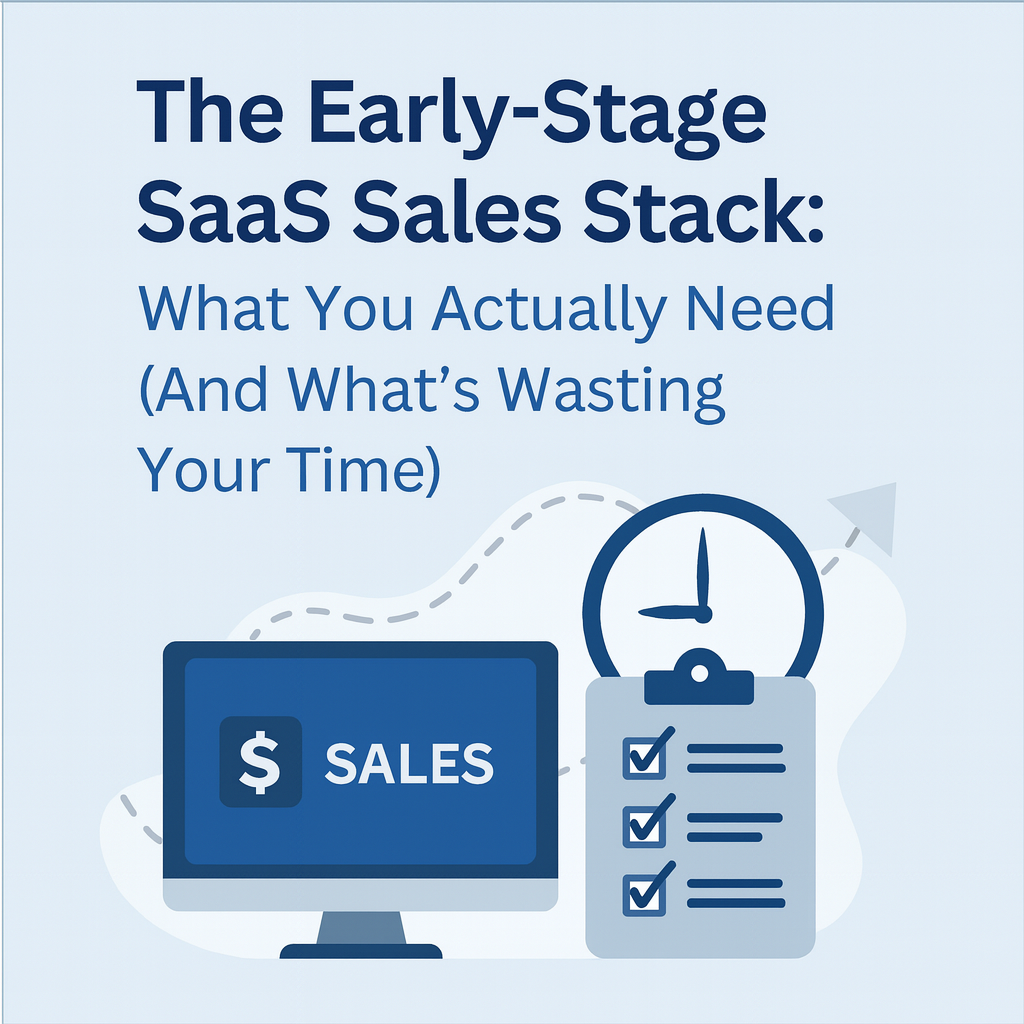
The Early-Stage SaaS Sales Stack: What You Actually Need (And What's Wasting Your Time)
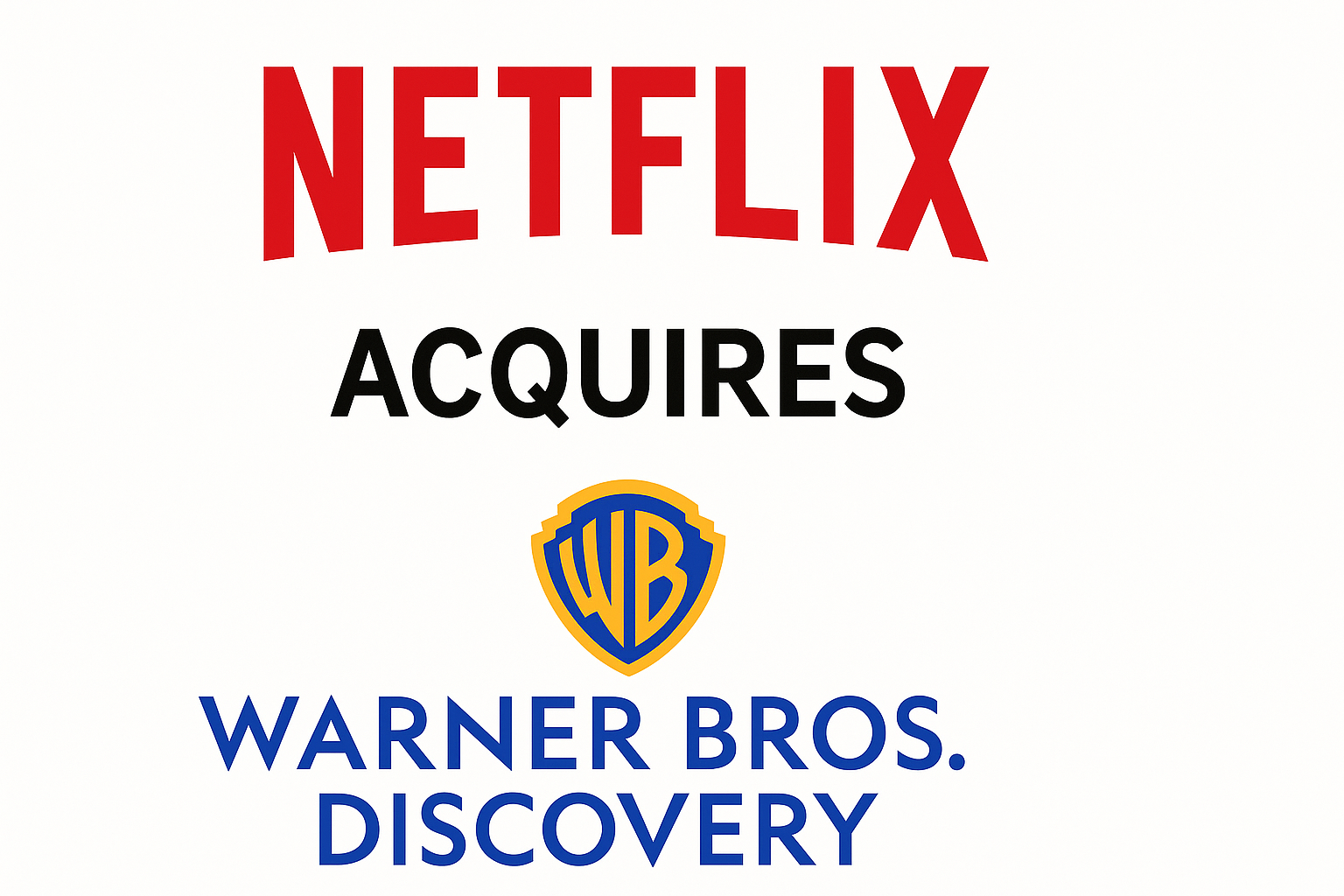
What Netflix's $72B Warner Bros Acquisition Reveals About SaaS Market Consolidation

.png)






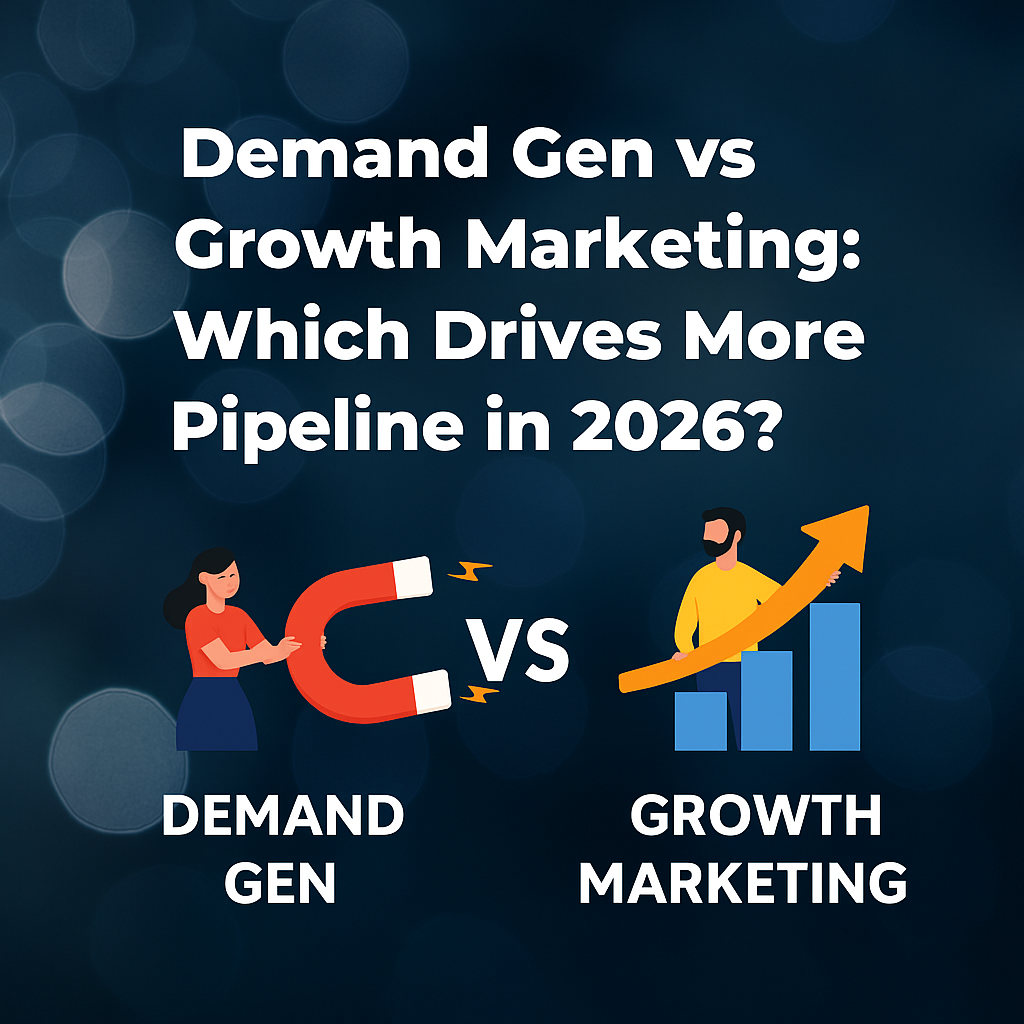


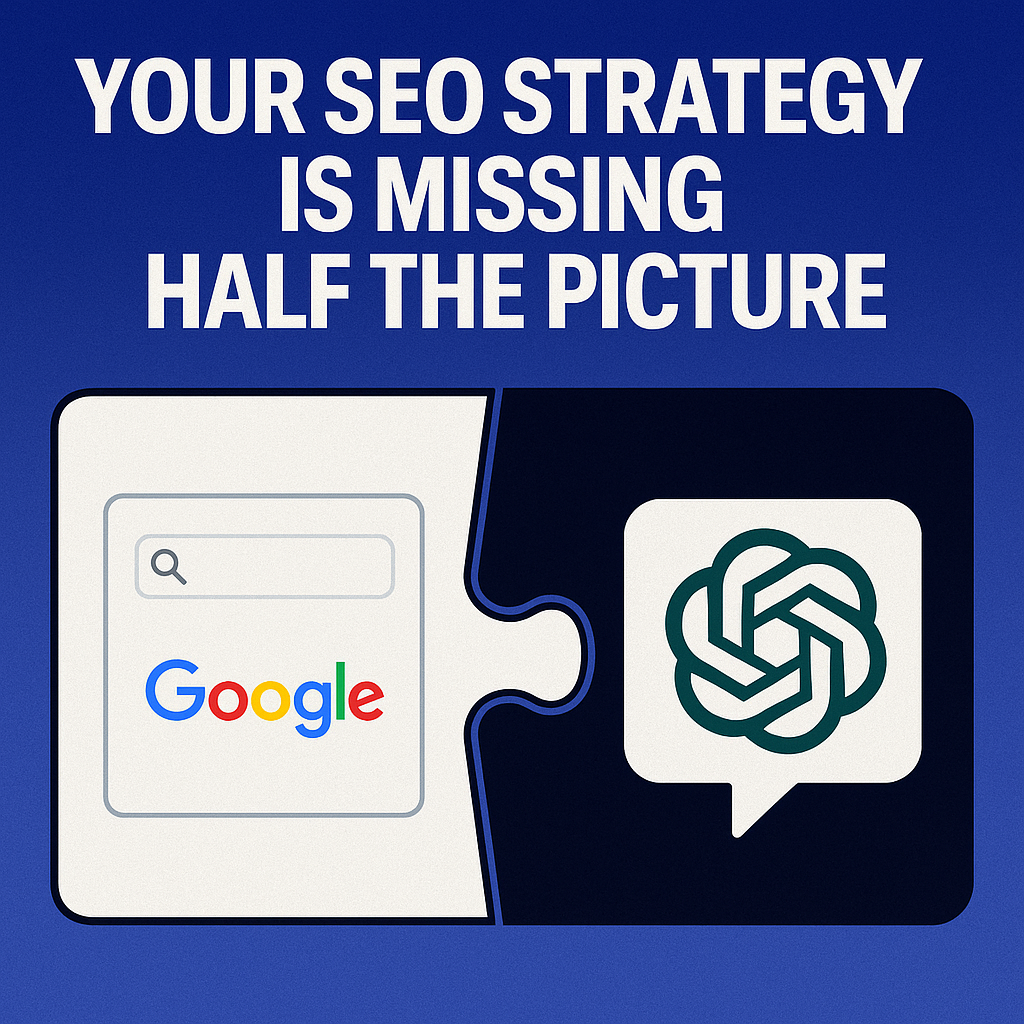
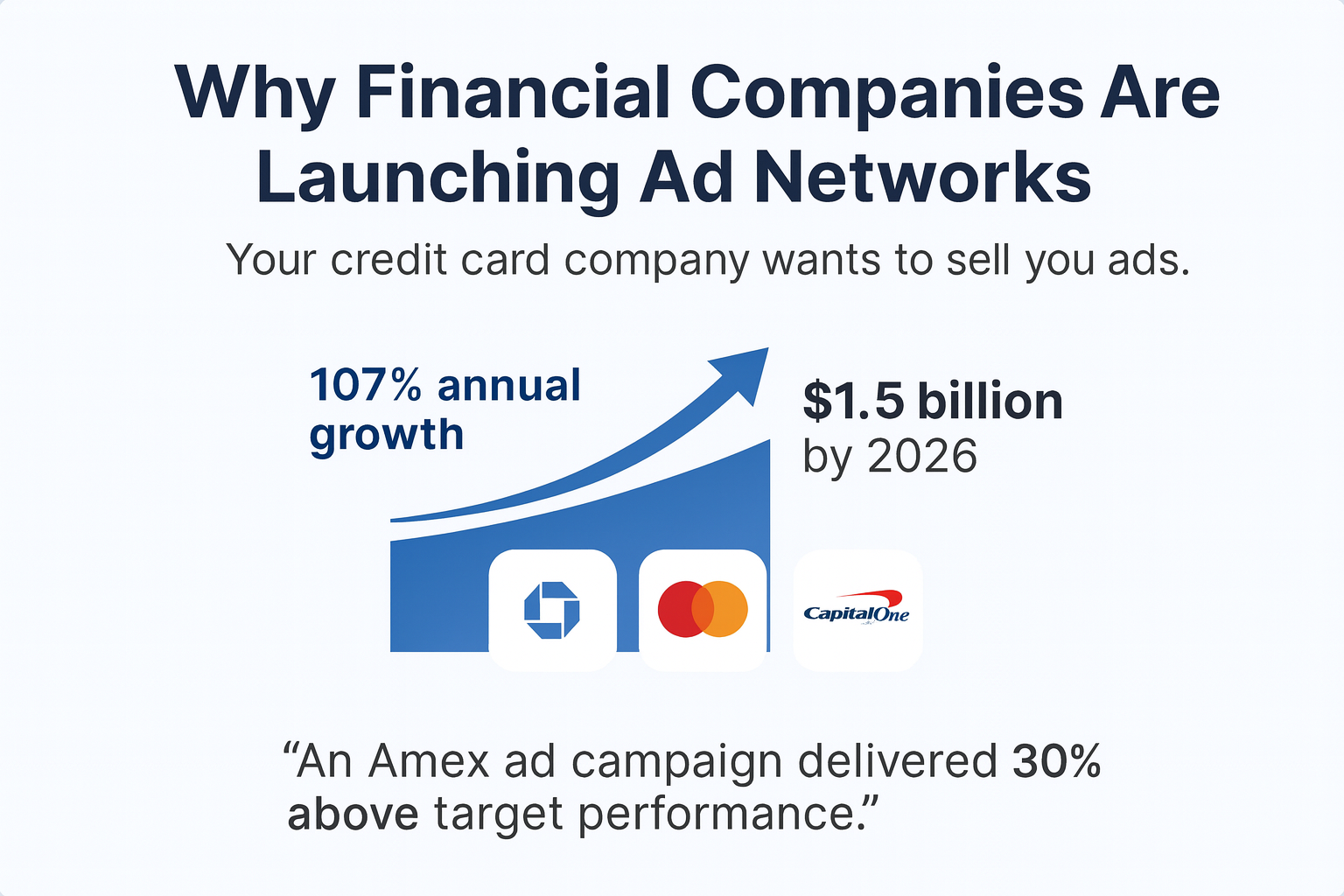








.png)























.png)

.jpg)





.jpg)




